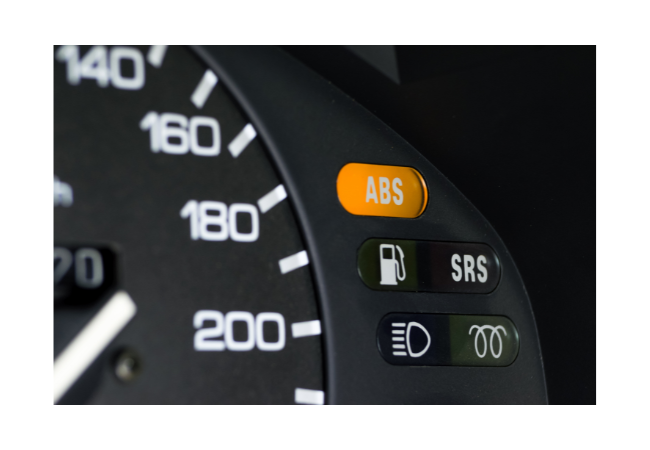Whether cruising the open road or navigating city streets, your Harley Davidson’s braking system is vital to a safe and enjoyable ride. But what if the ABS light on your bike’s dashboard suddenly illuminates, warning you of a potential issue? Ignoring it isn’t an option, but don’t worry – we’ve got you covered. In this comprehensive guide on how to reset ABS light on Harley Davidson, we’ll walk you through the process of resetting the ABS light on your beloved Harley while addressing common causes and sharing valuable maintenance tips to keep your bike in top shape.
By understanding the importance of the ABS light and the underlying issues that can activate it, you’ll not only ensure a safer ride but also extend the lifespan of your motorcycle. So buckle up and let’s dive into the world of Harley Davidson ABS systems!
Contents
Key Takeaways
- Understanding ABS Light Issues on Harley Davidson is key for a safe ride.
- Common causes of activation include faulty sensors, low brake fluid levels, air in the system, and damaged wiring or connections.
- Resetting your ABS light can be done using diagnostic tools or manual methods – but don’t forget to maintain it regularly!
Understanding ABS Light Issues on Harley Davidson

The ABS light is pivotal in ensuring your Harley’s ABS brakes work to their full potential, guaranteeing stability on the road. It’s typically triggered by communication issues between the motorcycle’s modules, including the rear wheel ABS sensor. An OBD2 scanner is a practical tool to diagnose the cause of a flashing ABS light by checking for error codes. Alternatively, advice from Harley Davidson enthusiast forums can also be helpful.
Regular maintenance of your Harley’s ABS system is fundamental for a safe ride. It’s important to address any ABS light issues promptly, as they can affect braking distance and overall performance. So let’s explore the common causes for ABS light activation and learn how to tackle them.
Common Causes for ABS Light Activation

There are several reasons why the ABS light might come on, including faulty sensors, low brake fluid, air in the system, or damaged wiring, all of which can affect your Harley’s braking distance.
We’ll examine each of these potential issues in detail within our forum community dedicated to providing insights on how to diagnose and rectify them, as well as sharing an image gallery for visual reference. Additionally, our table undo redo drafts feature allows users to easily manage their content revisions.
Faulty ABS Sensors
A malfunctioning ABS sensor can trigger the ABS light, signaling a problem with the braking system. To diagnose a faulty ABS sensor, start by checking for loose bolts or cracked wiring and then inspect for metal or ferrous debris accumulation around the sensor. This debris can often be found on Harley-Davidson touring bikes.
When checking your front or rear brakes, listen for strange noises or feel for vibrations when applying the brakes. If you suspect a faulty ABS sensor, cleaning it thoroughly and addressing any loose connections or debris can often resolve the issue.
Low Brake Fluid Levels
Low brake fluid levels can trigger the ABS light, as it indicates an issue with the brake system, which can then affect the ABS system. Signs of low brake fluid levels include a decrease in brake pedal pressure, a spongy feeling when brakes are applied, or a warning light on the dashboard.
Maintaining appropriate brake fluid levels is vital to avoid ABS light activation and to guarantee optimal braking performance. To address low brake fluid levels, top them up with the appropriate fluid type, as recommended by the manufacturer. Consistently monitoring and maintaining your Harley’s brake fluid levels will keep your ABS system running smoothly.
Air in the Brake System
Air in the brake system can interfere with the ABS system’s normal operation, triggering the ABS light and affecting the pressure and fluid flow in the system. Bleeding the ABS system can help eliminate air bubbles and stop the ABS light from coming on.
To bleed the brake system and remove air bubbles, follow these steps.
- Start by bleeding the front brake line.
- Move on to the rear brakes.
- This process ensures the removal of air from the system, restoring proper fluid flow and pressure for optimal braking performance.
Damaged Wiring or Connections
Damaged wiring or connections can also cause the ABS light to come on, indicating a problem with the braking system. Inspecting the wiring and connections for any broken or crimped wires can help diagnose the issue.
In cases where damaged wiring or connections are found, repairing or replacing them is essential. After fixing the wiring or connections, be sure to test the ABS system to ensure the light is off and the system is functioning correctly.
How to Reset ABS Light on Harley Davidson
Now that you’ve learned about the common causes of ABS light activation and how to address them, it’s time to reset the ABS light on your Harley Davidson. This can be achieved using diagnostic tools or manual reset methods.
We’ll examine both approaches to get your bike’s ABS system functioning correctly again.
Using Diagnostic Tools
Using diagnostic tools or scanners compatible with your Harley Davidson is an effective way to reset the ABS light and read error codes. Here are the steps to follow.
- Locate the diagnostic port on your motorcycle, which is usually close to the battery or the fuse box.
- Connect the diagnostic tool to the port.
- Follow the instructions displayed on the diagnostic tool to reset the ABS light.
This method allows you to not only reset the ABS light but also identify any error codes that may have triggered it. This enables you to address any underlying issues and prevent future ABS light activation.
Manual Reset Methods
If you don’t have access to a diagnostic tool or scanner, there are alternative manual methods to reset the ABS light. One such method involves disconnecting the battery for a short while and then reconnecting it, essentially resetting the ABS system. Alternatively, you can follow specific procedures outlined in your Harley Davidson owner’s manual, which may include pressing and holding the trip odometer trigger switch or the ABS button.
While these manual methods may not provide you with error codes, they can still effectively reset the ABS light and allow you to continue your ride. However, be sure to address any underlying issues that may have triggered the ABS light to prevent future activation.
Maintaining Your Harley Davidson’s ABS System

Regular upkeep of your Harley Davidson’s ABS system is vital in preventing future ABS light activation and maintaining optimal performance. By regularly inspecting and cleaning ABS sensors, monitoring brake fluid levels, and bleeding the brake system, you can keep your Harley’s ABS system in top shape and enjoy a safe and smooth ride.
Regularly Inspect and Clean ABS Sensors
Inspecting and cleaning ABS sensors at least once a month can help prevent malfunctions and ABS light activation. Be on the lookout for damage, corrosion, or loose connections when assessing your ABS sensors. If you notice any issues, it’s best to replace the faulty sensors promptly.
Cleaning ABS sensors is equally important for their proper functioning. Remove dirt and debris using a soft cloth and a mild detergent. Ensuring your ABS sensors are clean and in good working condition will contribute to a more reliable and efficient braking system on your front wheel.
Monitor Brake Fluid Levels
Frequent monitoring of your brake fluid levels and brake lines, at least on a monthly basis, is vital in preventing ABS light activation. Maintain the ideal brake fluid level between the ‘maximum’ and ‘minimum’ lines on the reservoir, checking the level when your bike is stopped on a level surface and the engine is cold.
If your brake fluid levels are low, top them up with the right type of brake fluid as recommended by the manufacturer. Monitoring and maintaining your Harley’s brake fluid levels will keep the ABS system functioning optimally and prevent potential braking issues with brake lines.
Bleed the Brake System
Annual bleeding of your Harley’s brake system is necessary for its proper functioning and to avoid ABS light activation. To bleed the brake system and remove air bubbles, follow these steps.
- Start by bleeding the front brake line.
- Move on to the rear brake brake line.
- Use the appropriate brake fluid type for your motorcycle, as recommended by the manufacturer.
Following this process will ensure the removal of air from the brake system, restoring proper fluid flow and pressure for optimal braking performance. Regularly bleeding the brake system contributes to a safer and more reliable ride.
Riding with a Faulty ABS System
The risks of riding a motorcycle with a faulty ABS system are significant and should not be underestimated. A malfunctioning ABS system can:
- Increase the chances of a crash
- Put everyone on the road at risk
- This leads to brake fade or failure
- Overheat the brake system
- Possibility of the wheels locking up while driving
These risks can have serious consequences and should be addressed immediately to ensure safe riding.
Promptly dealing with ABS light issues is crucial for your safety and that of others on the road. By following the steps outlined in this guide and maintaining your Harley Davidson’s ABS system, you can prevent potential accidents and ensure a safe, enjoyable riding experience. Don’t compromise on safety – keep your ABS system in top shape and ride with confidence.
Summary
In conclusion, addressing ABS light issues on your Harley Davidson motorcycle is essential for ensuring a safe and enjoyable ride. By understanding the common causes for ABS light activation, such as faulty sensors, low brake fluid levels, air in the brake system, or damaged wiring, and following the steps outlined in this guide to reset the ABS light, you can keep your bike’s braking system in top shape.
Proper maintenance, including regular inspection and cleaning of ABS sensors, monitoring brake fluid levels, and bleeding the brake system, is crucial for preventing future ABS light activation and ensuring optimal performance. Remember, your safety and the safety of others on the road depend on the proper functioning of your Harley Davidson’s ABS system. Ride with confidence knowing your bike is in excellent condition.
Frequently Asked Questions
How do you reset ABS light manually?
To reset the ABS light manually, disconnect the positive cable from your car battery and hold down the brake pedal to drain the vehicle’s electrical system.
After that, three quick presses of the gas pedal should do the trick – you’ll know it’s on when all the lights start illuminating.
Why is ABS light on Harley?
The ABS light on a Harley indicates a malfunction with the ABS system, typically caused by communication errors between the brakes, instrument module, and the ABS module.
The ABS is disabled so the brakes are operating as non-ABS brakes. To ensure safety, it’s best to visit a Harley-Davidson dealer for service.
How often should I inspect and clean my Harley’s ABS sensors?
It’s recommended to inspect and clean your Harley’s ABS sensors at least once a month to help keep them running smoothly.
What is the importance of bleeding the brake system on my Harley Davidson?
Bleeding your brake system on your Harley Davidson is important to ensure air bubbles are removed, fluid flow and pressure are maintained, and the ABS light does not activate.
What are the risks of riding with a faulty ABS system?
Riding with a faulty ABS system can increase the chances of a crash, putting everyone on the road at risk, and even lead to brake failure, overheating of the brake system, and wheel locking.
These issues can be avoided by regularly checking the ABS system and replacing any faulty parts. This will ensure that the brakes are working properly and that the system is functioning as it should.
